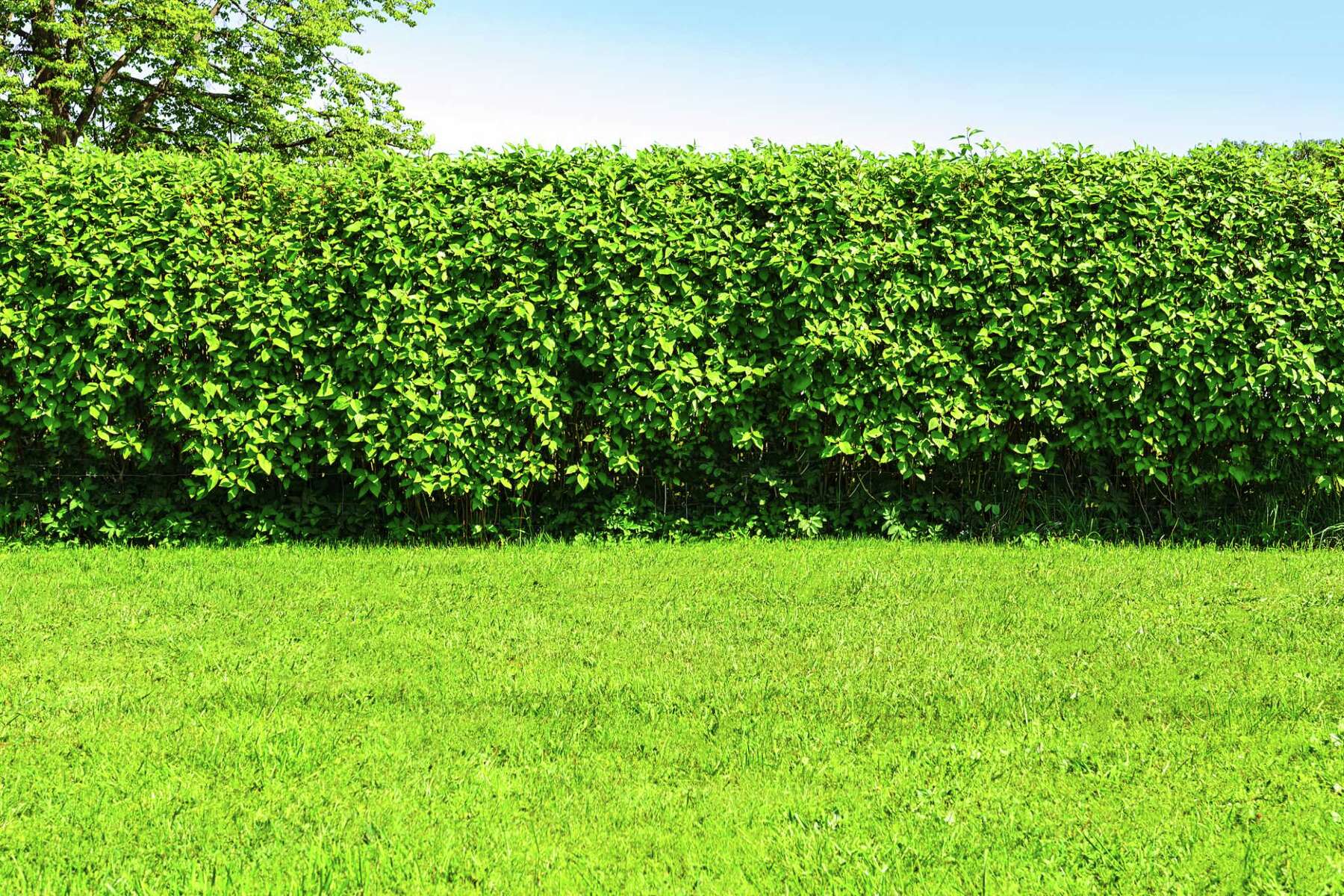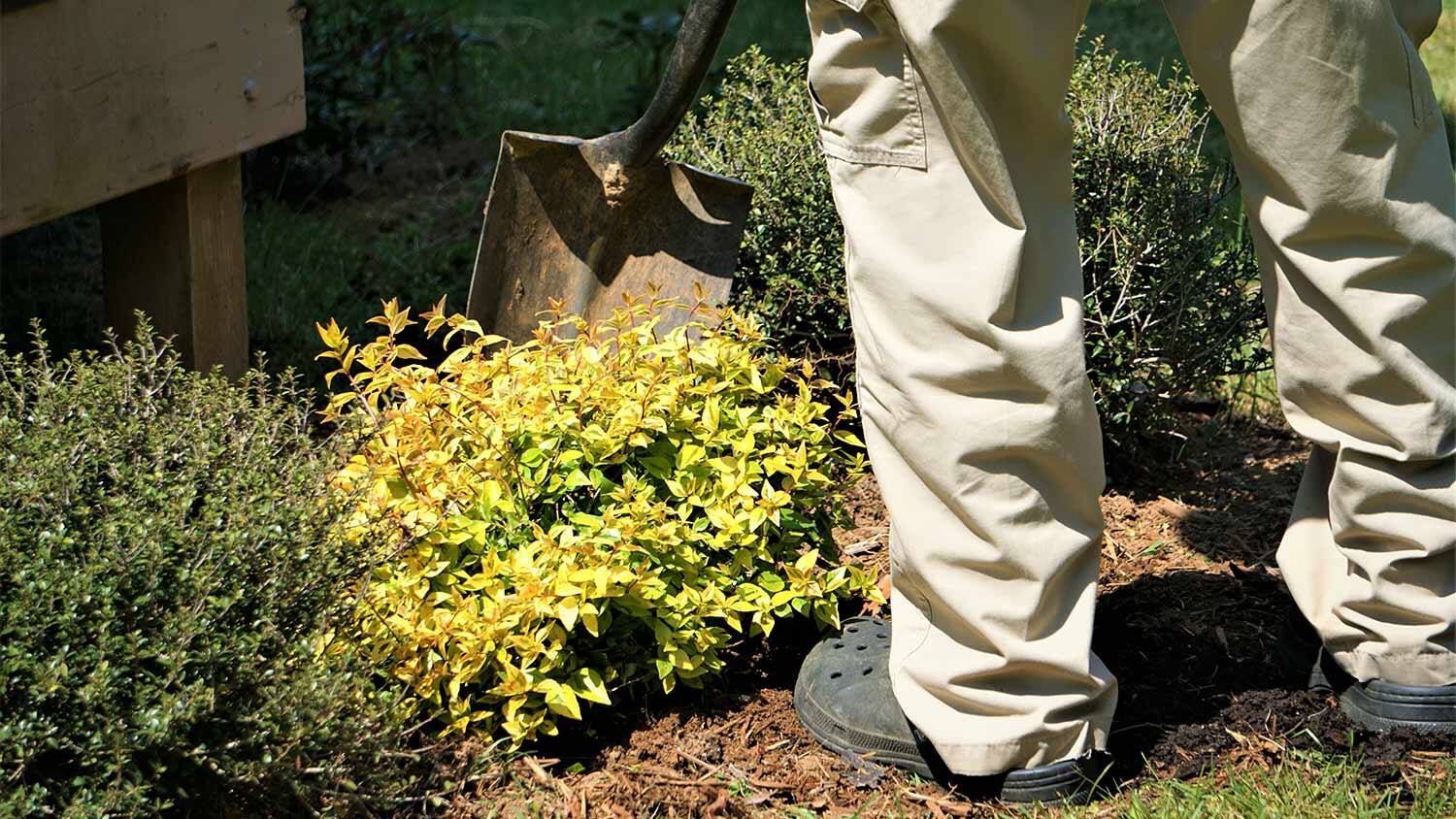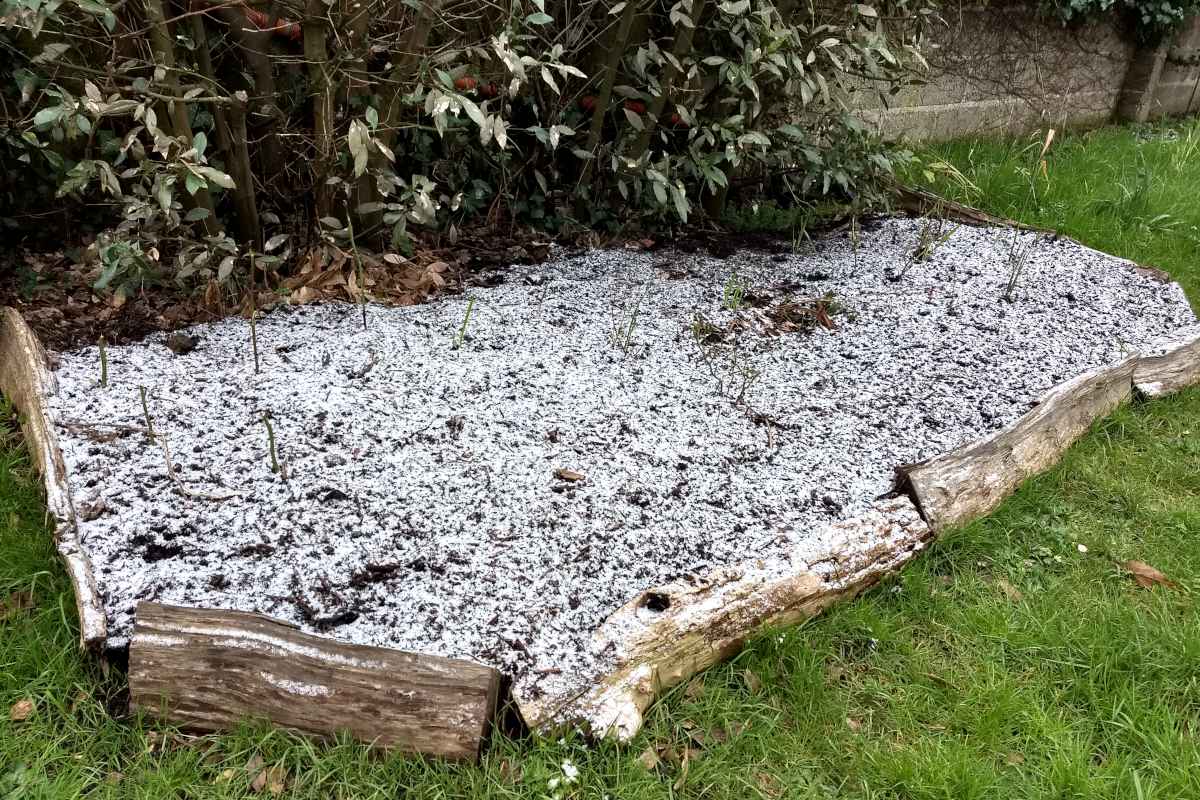Home>Gardening Techniques>Plant Care>How To Dispose Of Shrubs With Bagworms


Plant Care
How To Dispose Of Shrubs With Bagworms
Modified: January 22, 2024
Learn how to properly dispose of shrubs infested with bagworms with our expert plant care tips. Ensure the health of your garden with our step-by-step guide.
(Many of the links in this article redirect to a specific reviewed product. Your purchase of these products through affiliate links helps to generate commission for Chicagolandgardening.com, at no extra cost. Learn more)
Table of Contents
- Introduction
- Identifying Shrubs Infested with Bagworms
- Steps to Remove and Dispose of Shrubs with Bagworms
- Tools and Materials Needed
- Step 1: Pruning and Bagging Infested Branches
- Step 2: Removing Infested Shrubs from the Ground
- Step 3: Bagworm Disposal Methods
- Preventing Bagworm Infestations in the Future
- Conclusion
Introduction
Welcome to our comprehensive guide on how to dispose of shrubs infested with bagworms. Bagworms, scientifically known as Thyridopteryx ephemeraeformis, are common pests that can wreak havoc on your shrubs and cause significant damage if left untreated. These caterpillars spin protective bags made of silk and plant materials, which they hang from your shrubs and use as camouflage.
Identifying a bagworm infestation can be challenging, as the caterpillars blend seamlessly with the branches and foliage of the shrubs they infest. However, some telltale signs include the presence of small spindle-shaped bags hanging from the branches, defoliated foliage, and visible damage to the shrub’s structure.
In this article, we will walk you through a step-by-step process for effectively removing and disposing of bagworm-infested shrubs. We will also cover the essential tools and materials you will need for the task and provide tips on preventing future bagworm infestations.
Whether you are a seasoned gardener or a novice plant enthusiast, our guide will equip you with the knowledge and techniques required to tackle bagworm infestations and protect the health and appearance of your shrubs. So, let’s get started on removing those pesky bagworms!
Identifying Shrubs Infested with Bagworms
Before you begin the process of removing bagworm-infested shrubs, it is crucial to accurately identify the presence of these pests. Being able to identify a bagworm infestation will ensure that you are targeting the right shrubs for removal and disposal.
One of the first signs of a bagworm infestation is the presence of small, spindle-shaped bags hanging from the branches of the shrub. These bags are made by the bagworm caterpillars using silk and bits of plant material, providing them with a protective covering.
As the infestation progresses, you may notice defoliation of the shrub’s foliage. Bagworm caterpillars feed voraciously on the leaves, often stripping the shrub of its greenery, leaving behind bare branches.
Inspect the shrub carefully, paying attention to the tips of branches and the undersides of leaves. Bagworms can blend seamlessly with the foliage, so it is important to look closely. You may also find small clusters of black, pinhead-sized eggs on the bags or nearby branches.
Another indication of a bagworm infestation is visible damage to the shrub’s structure. Bagworm caterpillars can weaken branches by continuously feeding on them. This can cause the branches to become brittle and easily breakable.
If you are unsure whether your shrub is infested with bagworms or another type of pest, consult with a local gardening expert or extension service. They can help you confirm the presence of bagworms and provide guidance on the best course of action to take.
Remember, early detection of a bagworm infestation is crucial for effectively removing and disposing of the affected shrubs. So, keep a close eye on your plants and take action at the first signs of a problem.
Steps to Remove and Dispose of Shrubs with Bagworms
Once you have identified a bagworm infestation, it is important to take prompt action to remove and dispose of the affected shrubs. Follow these step-by-step instructions to effectively eliminate bagworms from your garden:
- Pruning and Bagging Infested Branches: Start by wearing protective gloves and using sterilized pruning shears. Carefully cut off the bags attached to the branches, ensuring you remove them completely. Place the bags into a garbage bag or a sturdy container lined with a plastic bag to prevent the caterpillars from escaping.
- Removing Infested Shrubs from the Ground: If the bagworm infestation is severe and the shrub is beyond saving, you will need to remove it from the ground. Dig around the shrub, ensuring you remove as much of the root system as possible. Use a shovel or prying tool to pry the shrub out of the ground, taking care not to damage nearby plants or structures. Place the shrub directly into a garbage bag or container lined with a plastic bag to contain any remaining bagworms.
- Bagworm Disposal Methods: There are a few options for disposing of the bagged caterpillars. You can seal the bags tightly and leave them in direct sunlight for a few days, as the heat will kill the bagworms. Alternatively, you can place the bags in a freezer for 24 to 48 hours, which will also eliminate the pests. If these methods are not feasible, you can tie the bags securely and dispose of them in a sealed trash can.
It is important to note that bagworms are highly mobile, so be cautious when removing infested shrubs. Make sure to contain the bagworms and avoid accidentally spreading them to other areas of your garden.
Remember to thoroughly clean and sterilize your pruning tools and dispose of any plant debris associated with bagworm-infested shrubs. This will help prevent the spread of bagworms to other plants in your garden.
By following these steps, you can effectively remove and dispose of bagworm-infested shrubs, reducing the risk of further damage and preventing the spread of these pests.
Tools and Materials Needed
Before you begin the process of removing and disposing of bagworm-infested shrubs, gather the necessary tools and materials to ensure a smooth and efficient operation. Here are the essential items you will need:
- Protective gloves: Invest in a pair of durable gloves to protect your hands from potential prickly branches and bagworms.
- Sterilized pruning shears: Make sure to have a pair of sharp pruning shears that are clean and sterilized. This helps prevent the spread of any diseases or pests.
- Garbage bags or containers with plastic liners: Have an ample supply of sturdy garbage bags or containers lined with plastic bags to easily collect and contain the bagworms and infested plant material.
- Shovel or prying tool: If the bagworm infestation is severe and the shrub needs to be removed from the ground, a shovel or prying tool will be necessary to dig around the shrub and pry it out.
- Sunlight or freezer: If you choose to use sunlight or a freezer to dispose of the bagged bagworms, ensure you have access to a sunny spot or a freezer large enough to accommodate the bags.
These tools and materials will help facilitate the removal and disposal process, keeping you protected and making it easier to handle the bagworm-infested shrubs.
Keep in mind that the specific tools and materials required may vary depending on the size and severity of the infestation, as well as your personal preferences and gardening practices. Adapt the list to suit your specific needs, but always prioritize safety and effectiveness.
Now that you have assembled the necessary tools and materials, you are ready to begin removing and disposing of bagworm-infested shrubs. Follow the steps outlined in the previous section to effectively eliminate these pests from your garden.
Step 1: Pruning and Bagging Infested Branches
To start the process of removing bagworm-infested shrubs, the first step is to prune and bag the infested branches. Follow these instructions to effectively eliminate the bagworms:
- Put on a pair of protective gloves to prevent any potential injury from thorns or prickly branches.
- Inspect the shrub carefully and identify the branches that are infested with bagworms. Look for the small, spindle-shaped bags hanging from the branches or any signs of defoliation.
- Using sterilized pruning shears, carefully cut off the infested branches near their base. Make sure to remove the entire branch, including the attached bagworm bag. If the branches are large and difficult to reach, use a ladder or extendable pruning tools for better access.
- Place the cut branches directly into a garbage bag or a sturdy container lined with a plastic bag. This will prevent the bagworms from escaping and spreading to other plants in your garden.
- Continue pruning and bagging the infested branches, working your way around the shrub until all the visibly affected areas have been removed.
- Once you have finished pruning, securely tie or seal the garbage bag or container to prevent any potential escape of the bagworms. Dispose of the bag in a sealed trash can or follow the bagworm disposal method outlined in the later section of this guide.
Remember, bagworms are highly mobile, so exercise caution when handling the infested branches. Be mindful not to accidentally shake the bags or allow any caterpillars to escape during the pruning process.
After pruning and bagging the infested branches, thoroughly clean and sterilize your pruning shears to prevent the spread of any diseases or pests to other plants. This can be done by wiping the blades clean with a cloth soaked in rubbing alcohol or a sterilizing solution recommended for gardening tools.
By following these steps, you will effectively prune and bag the bagworm-infested branches, eliminating a significant portion of the pests and preventing further damage to the shrub.
Step 2: Removing Infested Shrubs from the Ground
If the bagworm infestation is severe and the shrub is beyond saving, it may be necessary to remove it from the ground. Follow these steps to safely and effectively remove the bagworm-infested shrub:
- Before you begin, ensure you have all the necessary tools and protective gear, including gloves and a shovel or prying tool.
- Start by digging around the base of the shrub, creating a wide and deep hole. This will give you better access to the shrub’s root system.
- Use a shovel to cut through any remaining roots and loosen the shrub from the ground. Gently rock the shrub back and forth to help free it from the soil.
- Once the shrub is loose, carefully lift it out of the hole, taking care not to damage any nearby plants or structures.
- Place the shrub directly into a garbage bag or a sturdy container lined with a plastic bag. This will prevent any remaining bagworms from escaping.
- Seal the garbage bag or container securely to prevent the bagworms from spreading. Dispose of the bag in a sealed trash can or follow the bagworm disposal method outlined in the later section of this guide.
- After removing the infested shrub, fill in the hole with soil and tamp it down to ensure stability and prepare the area for any future plantings.
Remember to exercise caution when removing bagworm-infested shrubs from the ground. Be mindful of the bagworms, as they can move quickly and may attempt to escape during the removal process.
Once you have removed the shrub, thoroughly clean and sanitize your tools to prevent the spread of any diseases or pests to other areas of your garden. Clean the shovel with water and a disinfecting solution, and wash your gloves thoroughly before using them again.
By following these steps, you will be able to safely remove bagworm-infested shrubs from the ground, reducing the risk of spreading the pests and preventing further damage to your garden.
Step 3: Bagworm Disposal Methods
Once you have pruned and removed the bagworm-infested branches or uprooted the shrubs from the ground, it’s essential to properly dispose of the bagworms to prevent further infestation. Here are several effective bagworm disposal methods:
- Direct sunlight: Place the bags containing the bagworms in direct sunlight. The heat will gradually kill the caterpillars within a few days. Make sure the bags are securely sealed to prevent any potential escape.
- Freezing: If you’re unable to expose the bagworm bags to sunlight, another option is to place them in a freezer. Seal the bags tightly and transfer them to the freezer for 24 to 48 hours. The extreme cold will effectively eliminate the bagworms.
- Sealed disposal: If neither sunlight nor freezing is feasible, seal the bags containing the bagworms tightly. Ensure there are no openings or gaps that could allow the caterpillars to escape. Then, place the sealed bags in a securely tied garbage bag and dispose of them in a sealed trash can.
- Professional pest management: If the bagworm infestation is severe and widespread, it may be necessary to contact a professional pest management service. They will have the expertise and specialized equipment to effectively eliminate the bagworms and prevent future infestations.
Select the disposal method that is most convenient and suitable for your situation. Remember, bagworms are highly mobile and can cause damage to other plants, so it’s crucial to ensure they are safely contained during disposal.
Always follow your local waste disposal regulations when disposing of bagworm-infested material. Some areas may have specific guidelines for the disposal of garden waste that contains pests.
By properly disposing of the bagworms, you will significantly reduce the risk of further infestation and protect the health of your garden.
Preventing Bagworm Infestations in the Future
While removing and disposing of bagworm-infested shrubs is crucial, it is equally important to take preventative measures to avoid future infestations. Here are some effective strategies to prevent bagworm infestations in your garden:
- Regular inspection: Regularly inspect your shrubs and plants for any signs of bagworms. Look for the small, spindle-shaped bags hanging from the branches or any visible damage to the foliage. Early detection can help prevent the spread of bagworms to other plants.
- Pruning and maintenance: Practice regular pruning and maintenance of your shrubs. Trim away any dead or damaged branches promptly, as bagworms are often attracted to weak or stressed plants. By keeping your shrubs healthy and well-maintained, you can make them less susceptible to infestations.
- Hand-picking: If you notice a few bagworms on your shrubs, you can manually remove them by hand. Carefully pluck the bags from the branches and dispose of them in a sealed bag. Though time-consuming, this method can be effective for small infestations.
- Biological control: Encourage natural predators, such as birds or beneficial insects like parasitic wasps, to help control bagworm populations. Provide birdhouses or bird feeders to attract birds to your garden, and avoid using broad-spectrum insecticides that can harm beneficial insects.
- Barrier methods: Consider using physical barriers, such as fine mesh netting or row covers, to protect susceptible plants from bagworm infestations. These barriers can prevent adult male bagworm moths from laying eggs on the plants and reduce the risk of future infestations.
- Proper plant selection: Choose plant varieties that are less attractive to bagworms. Research and select shrub species that are known to be resistant or less susceptible to bagworm infestations.
- Clean garden practices: Practice good garden hygiene by removing fallen leaves and plant debris regularly. Bagworm eggs can overwinter in plant debris, so keeping your garden clean can help reduce the chances of infestation.
- Educate yourself: Stay informed about bagworm life cycles, habits, and management techniques. This knowledge will empower you to make proactive decisions and effectively address any potential bagworm issues.
By implementing these preventative measures, you can significantly reduce the risk of bagworm infestations in your garden. Remember that a combination of strategies is often the most effective approach, as it creates multiple lines of defense against these persistent pests.
By practicing regular inspection, maintenance, and implementing preventative measures, you can enjoy a bagworm-free garden and protect the health and beauty of your plants.
Conclusion
Dealing with bagworm infestations in your shrubs can be a challenging task, but with the right knowledge and approach, you can effectively remove and dispose of these pests. By following the steps outlined in this guide, you can tackle bagworm-infested shrubs and protect the health and appearance of your garden.
Identifying bagworm infestations early is crucial for prompt action. Look for the telltale signs such as the presence of spindle-shaped bags, defoliated foliage, and visible damage to the shrub’s structure.
Once you have identified the infestation, pruning and bagging the infested branches is the first step. Remember to wear protective gloves, use sterilized pruning shears, and securely bag the branches to contain the bagworms.
If the infestation is severe, removing the infested shrubs from the ground may be necessary. Carefully uproot the shrub, bag it, and dispose of it properly to prevent any further spread of bagworms.
When disposing of the bagworms, options such as exposing them to direct sunlight or freezing them can be effective. Seal the bags tightly to prevent any escape and comply with local waste disposal regulations.
Preventing future bagworm infestations is essential for maintaining a healthy garden. Regular inspection, pruning, and maintenance, along with practices like hand-picking, biological control, and barrier methods, can help keep bagworm populations under control.
By being proactive and implementing these prevention strategies, you can reduce the risk of bagworm infestations and protect the plants in your garden.
Remember, bagworm infestations can be persistent, so staying informed and vigilant is key. With the knowledge and techniques provided in this guide, you can confidently address bagworm infestations and enjoy a flourishing and pest-free garden.










